|
All 5 books, Edward Tufte paperback $180
All 5 clothbound books, autographed by ET $280
Visual Display of Quantitative Information
Envisioning Information
Visual Explanations
Beautiful Evidence
Seeing With Fresh Eyes
catalog + shopping cart
|
Edward Tufte e-books Immediate download to any computer: Visual and Statistical Thinking $5
The Cognitive Style of Powerpoint $5
Seeing Around + Feynman Diagrams $5
Data Analysis for Politics and Policy $9
catalog + shopping cart
New ET Book
Seeing with Fresh Eyes:
catalog + shopping cart
Meaning, Space, Data, Truth |
Analyzing/Presenting Data/Information All 5 books + 4-hour ET online video course, keyed to the 5 books. |
The side note on page 89 of "Envisioning Information" mentions a book called "Visual Design of the User Interface" published in 1989 written by yourself. I am having a difficult time locating this book from Barnes and Noble or other such book dealers. How can I obtain a copy? Is it still being published?
Thank you,
Beth
-- Beth Weinstein
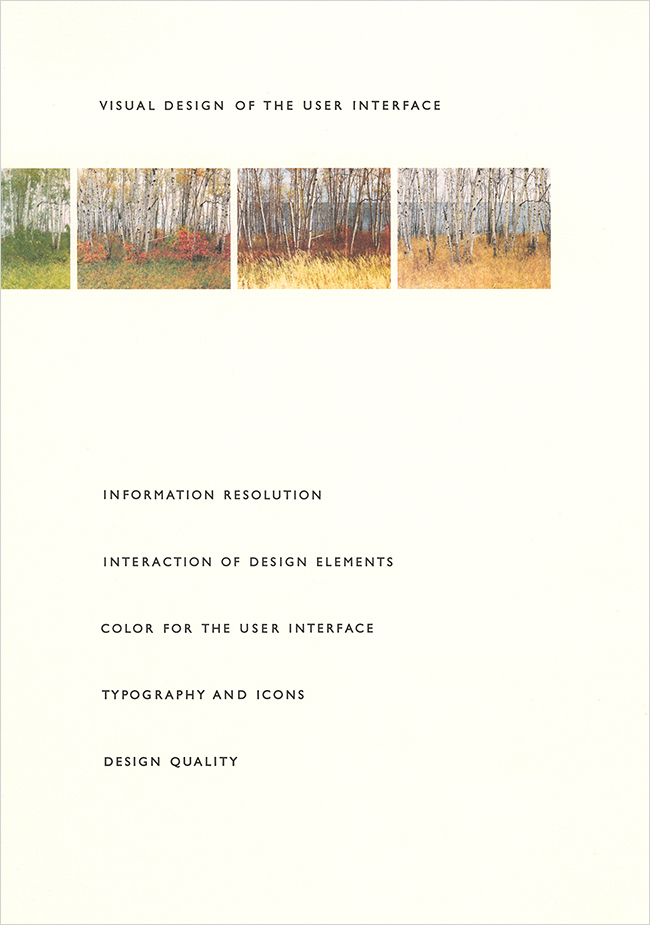 |
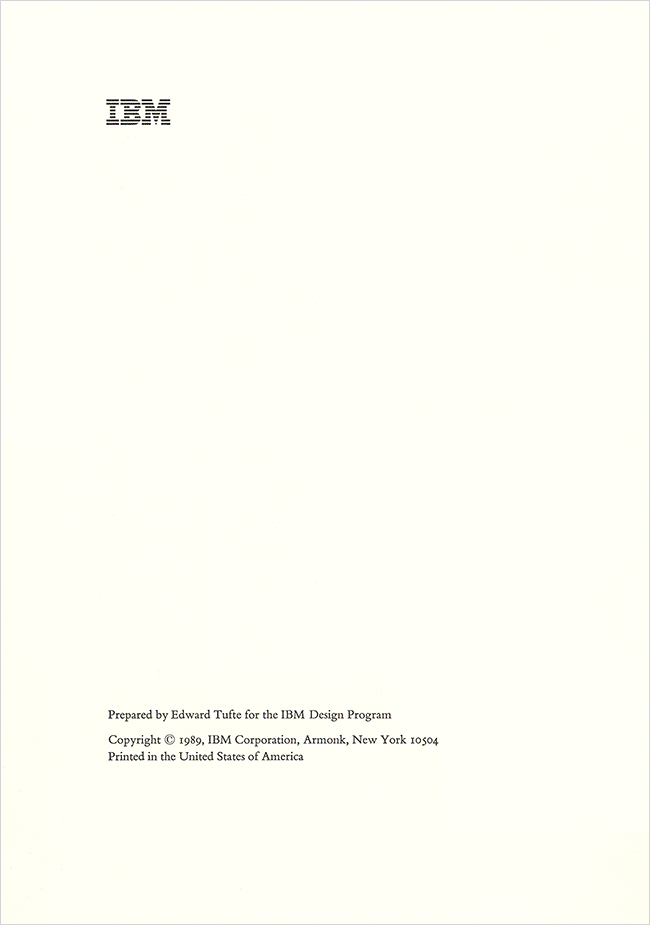 |
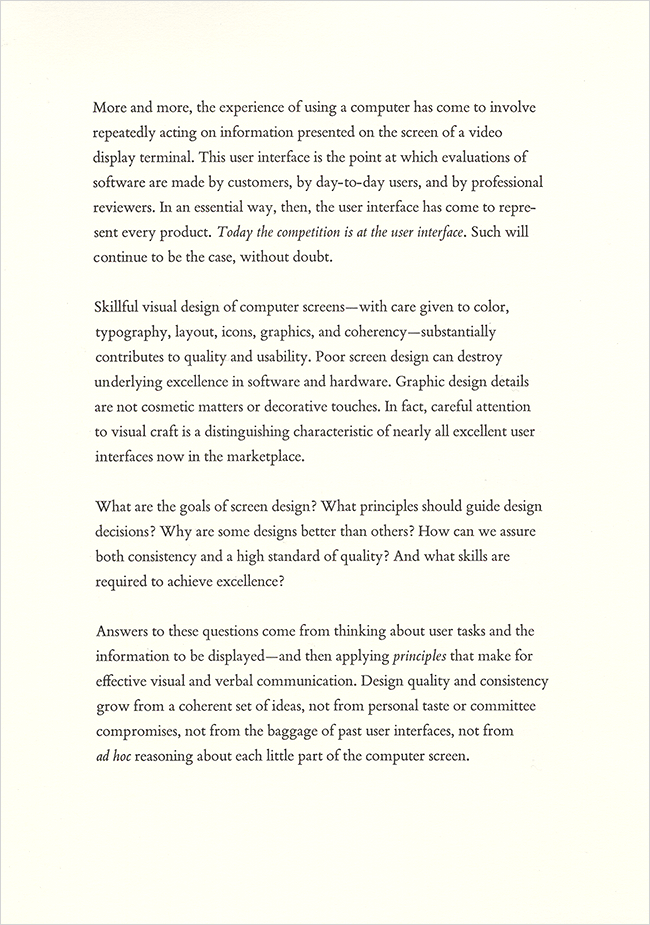 |
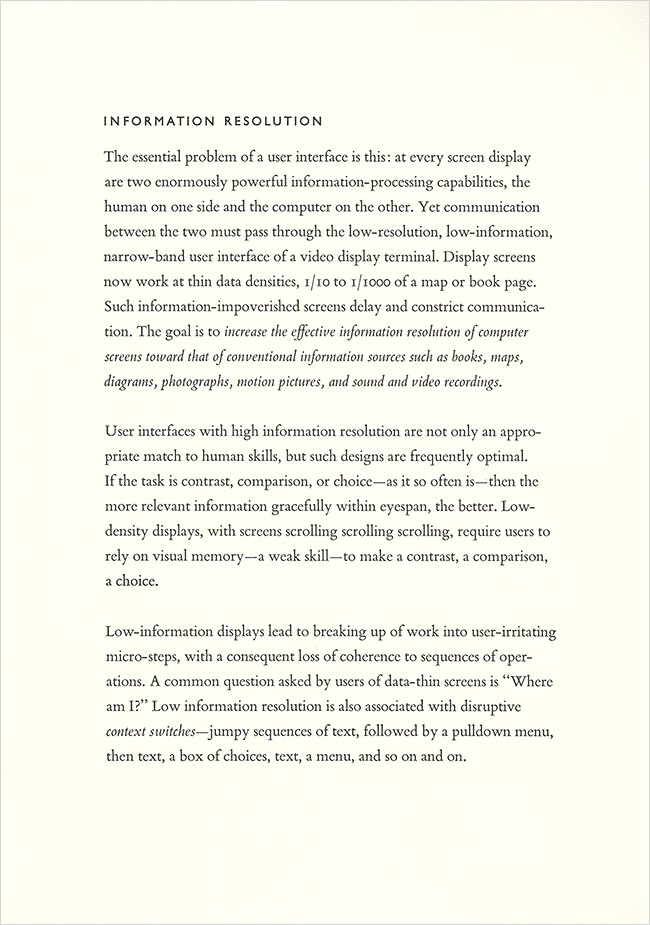 |
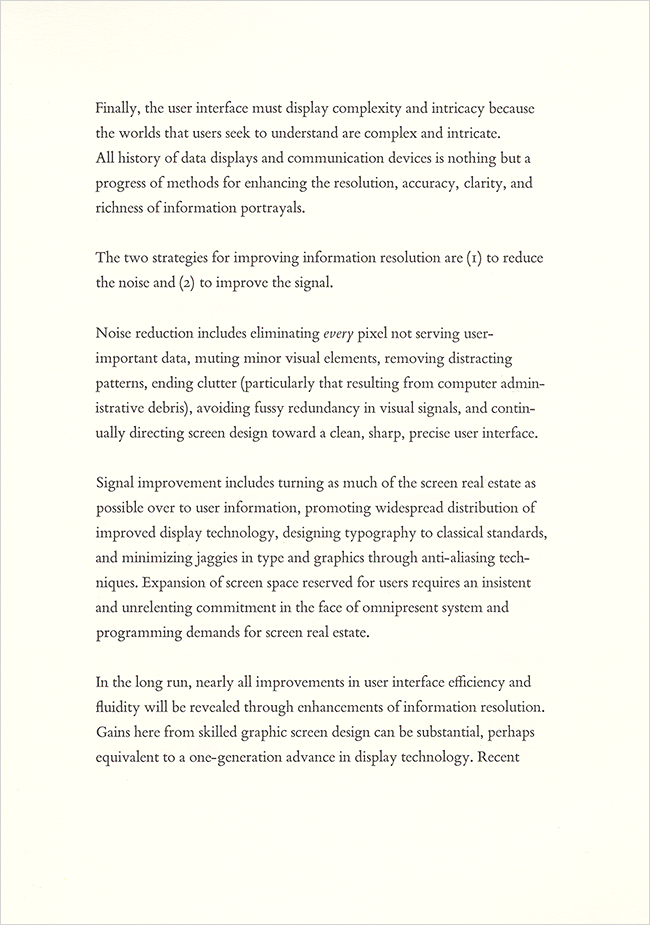 |
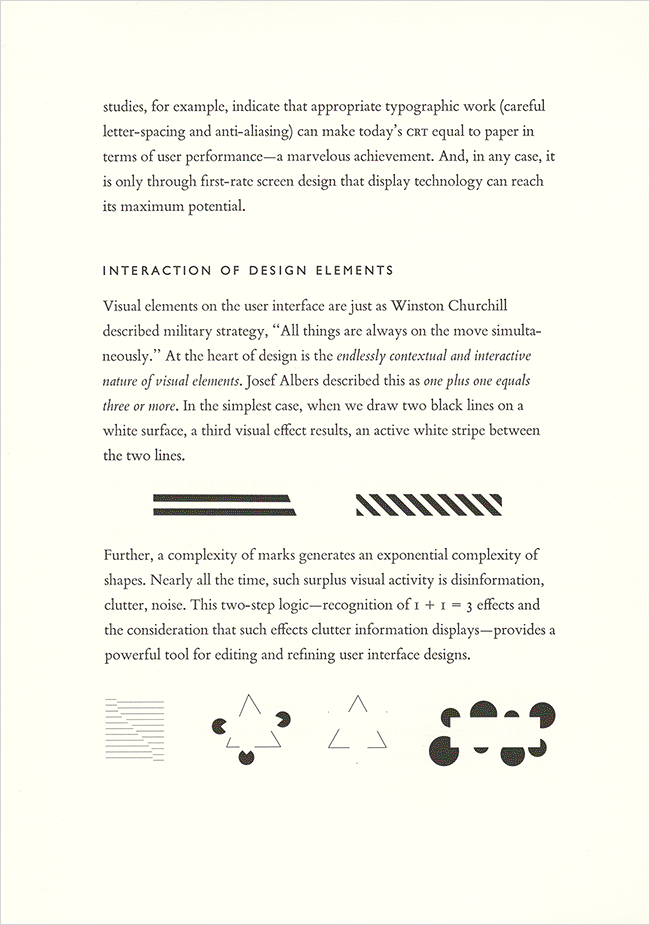 |
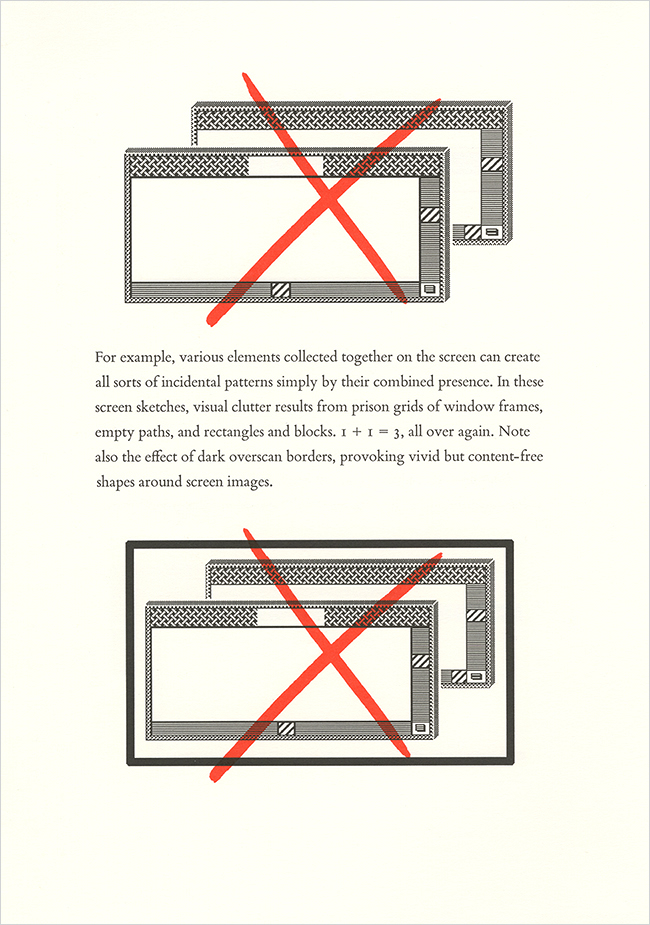 |
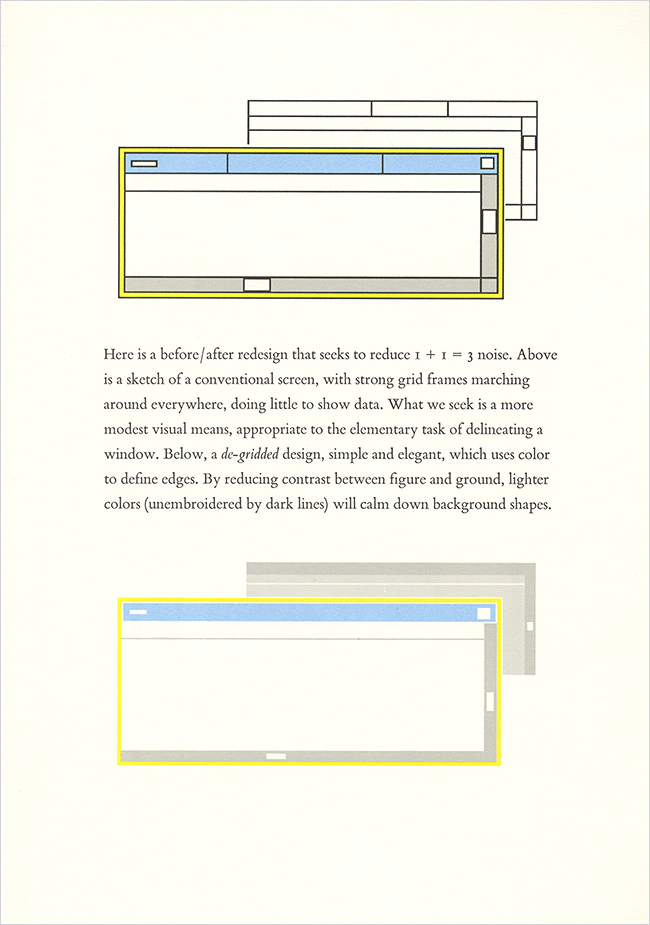 |
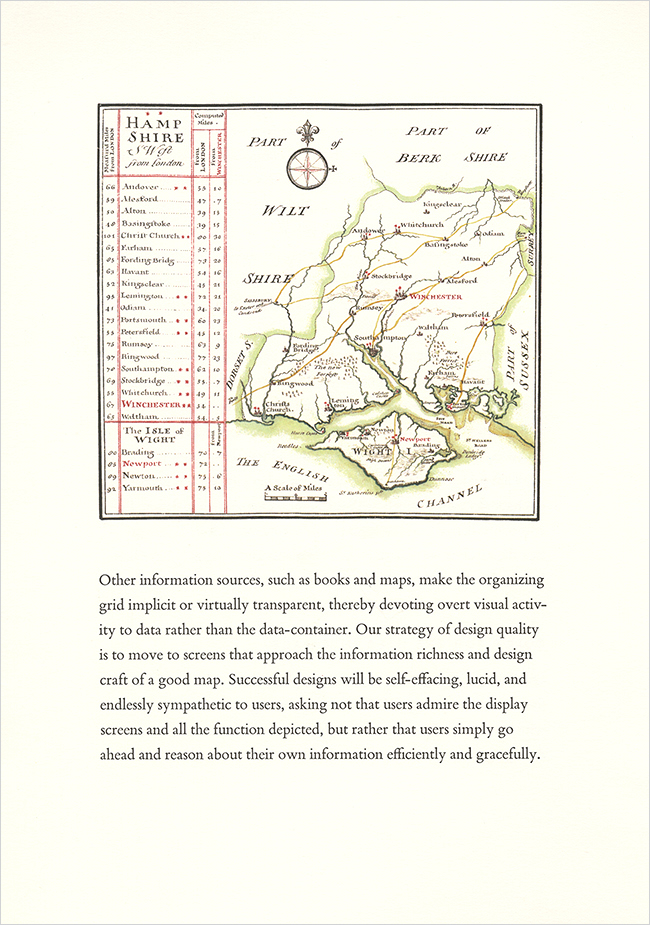 |
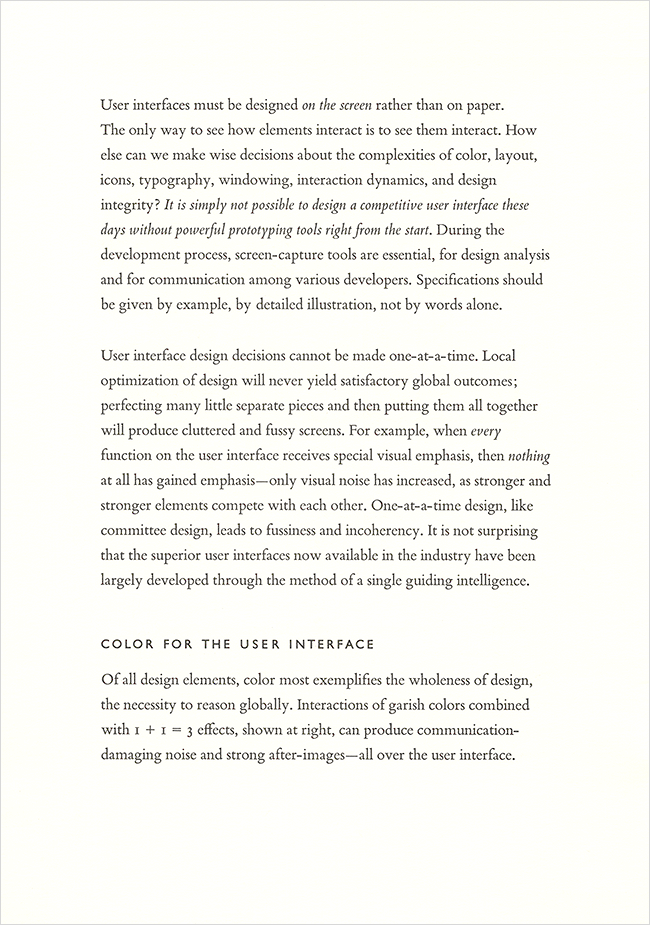 |
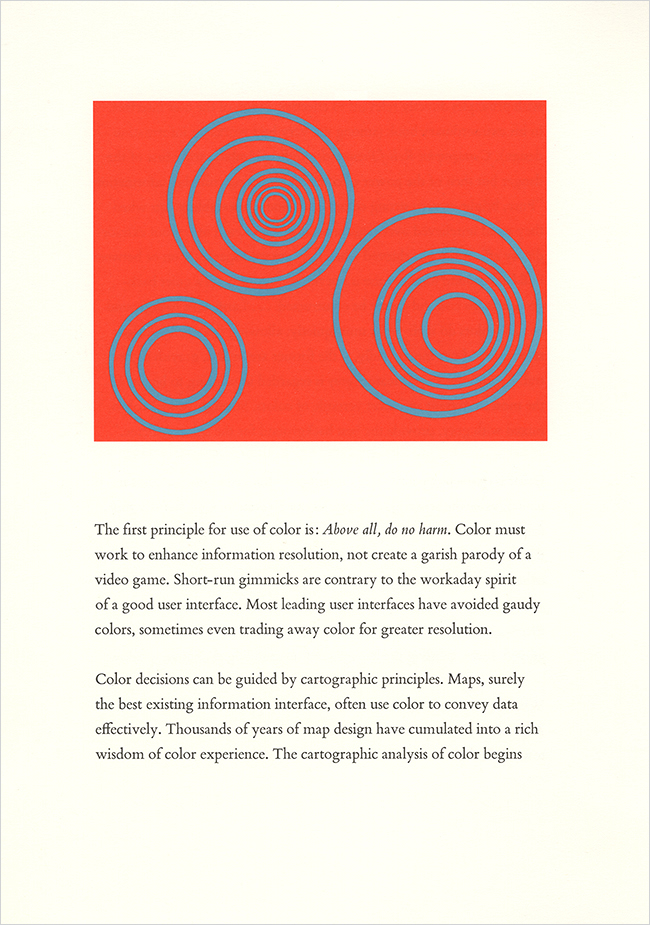 |
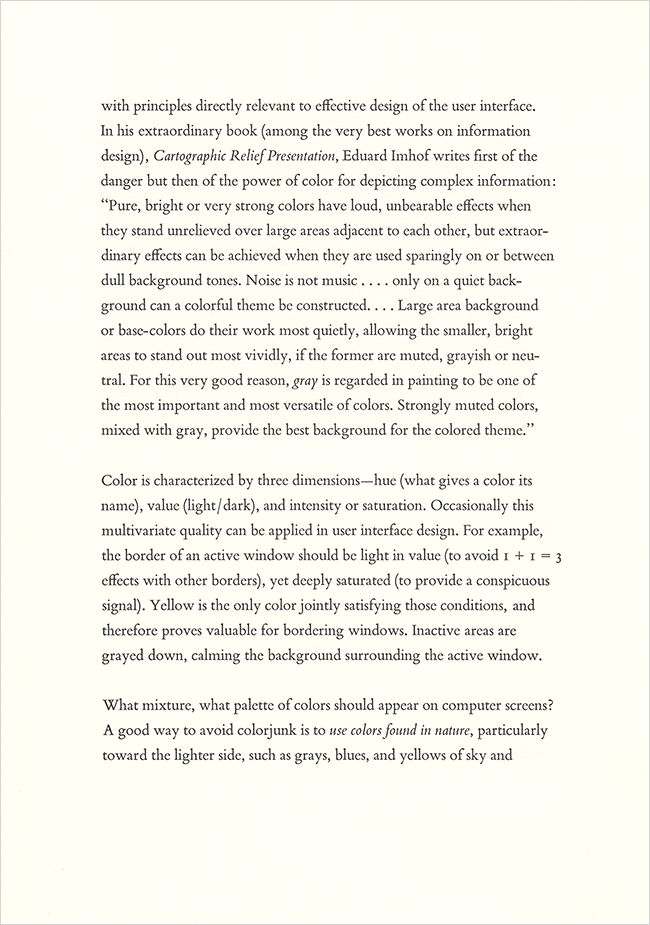 |
 |
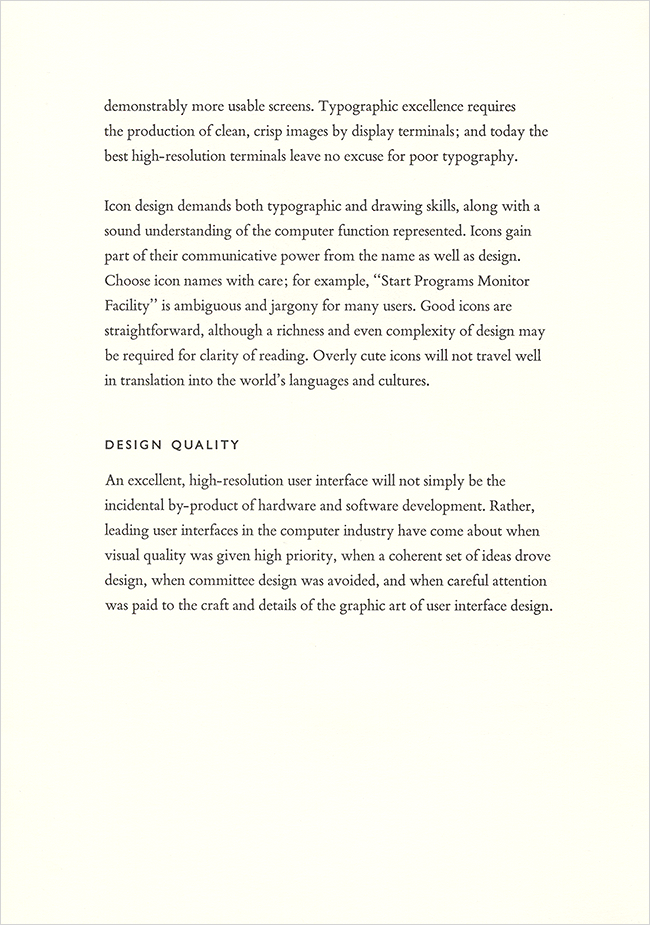 |
 |
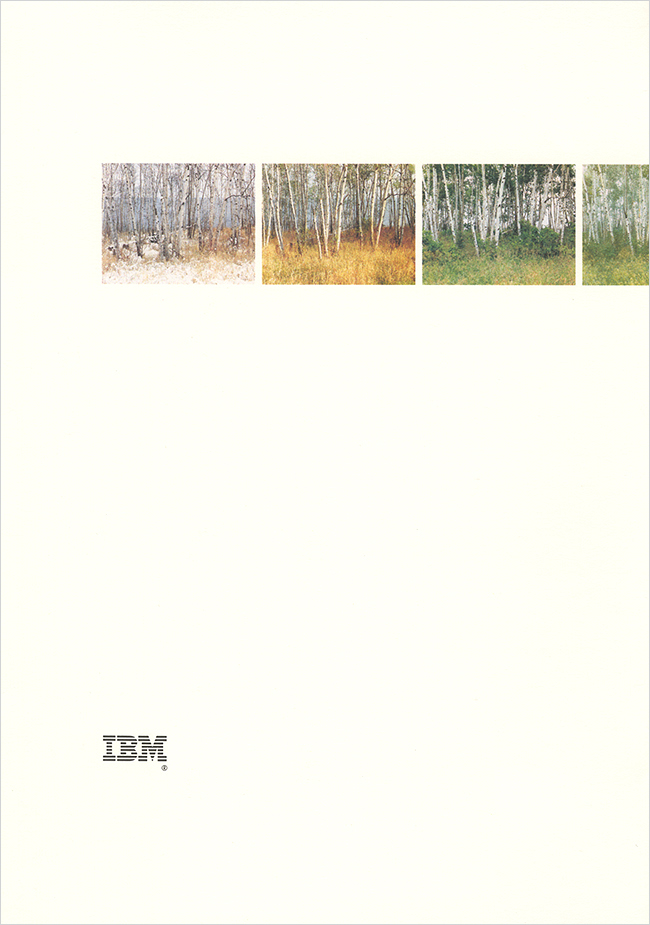 |
A long time ago for a long time I was corporate consultant for information and interface design at IBM. As a part of my effort to shape up Windows and OS/2 (this was before IBM and Microsoft went their separate ways), I wrote and designed a little 16-booklet on interface design, Visual Design of the User Interface.
The booklet was published in 1989, but thankfully it deals with timeless design principles and is not tied to the quirks and limitations of yesterday's technology. Much of the text and all the illustrations in the booklet are included in my book Envisioning Information.
If you seek advice about interface design, don't bother with my antique booklet. Instead, read the book Envisioning Information and also all the entries in the index under the word "interface" in my book Visual Explanations. In VE, see especially pages 146-150, an anticipation of the touchscreen iPhone.
-- Edward Tufte
Jeff Atwood reviews the unique Sugar user interface being developed for Negroponte's $100 Green Machine.
-- Niels Olson (email)
The cartoony interface appears somewhat patronizing.
I hope the computer has document-centered metaphor, rather than the OS+applications approach (a software house metaphor) that now prevails.
-- Edward Tufte
On Jeff Atwood's blog, he quotes Negroponte: "Mr. Negroponte has strong feelings on this topic: 'In fact, one of the saddest but most common conditions in elementary school computer labs (when they exist in the developing world), is the children are being trained to use Word, Excel and PowerPoint. I consider that criminal, because children should be making things, communicating, exploring, sharing, not running office automation tools. ' "
-- Reed H (email)
I just got a Sugar emulator running, and I can at least report that the heavy black border full of icons, as seen in most images, goes away when one is actually using a program, much like the Windows taskbar when it's set to autohide, except these programs aren't running. The cartoony mouse pointer, however, is horribly clunky. My daughter just turned five and she's entirely comfortable with a standard mouse pointer; she appreciated the connection between pointer and mouse by the age of four. Having the mouse pointer mimic the icons places form over function.
One thing I found interesting is that there seem to be help buttons buried in the real filesystem menus, left from the Fedora OS (a Linux distro) they started from, but they've disabled the help menus. You learn the interface by trial and error. Sugata Mitra has some interesting observations about how this is probably just fine for kids.
Investing a couple of hours to set up an emulator (all the necessary software is free) does yield some intellectual tickles, just figuring out how the thing works, but underneath, it's still a computer, and quite specifically, it's a Linux box. Networking, a filesystem, it's all there, the files are even in the usual directories. Internet infrastructure and access, it seems to me, are the most valuable parts of this. And that's a big deal. From Sugata Mitra's article:
I went to a middle-class school and chose some ninth graders, two girls and two boys. I called their physics teacher in and asked him, "What are you going to teach these children next year at this time?" He mentioned viscosity. I asked him to write down five possible exam questions on the subject. I then took the four children and said, "Look here guys. I have a little problem for you." They read the questions and said they didn't understand them, it was Greek to them. So I said, "Here's a terminal. I'll give you two hours to find the answers."Then I did my usual thing: I closed the door and went off somewhere else.
They answered all five questions in two hours. The physics teacher checked the answers, and they were correct. That, of itself, doesn't mean much. But I said to him, "Talk to the children and find out if they really learned something about this subject." So he spent half an hour talking to them. He came out and said, "They don't know everything about this subject or everything I would teach them. But they do know one hell of a lot about it. And they know a couple of things about it I didn't know."
That's not a wow for the children, it's a wow for the Internet. It shows you what it's capable of. The slum children don't have physics teachers. But if I could make them curious enough, then all the content they need is out there. The greatest expert on earth on viscosity probably has his papers up there on the Web somewhere. Creating content is not what's important. What is important is infrastructure and access ... The teacher's job is very simple. It's to help the children ask the right questions.
-- Niels Olson (email)
Plan 9 interface details
Rob Pike mentions "colors should fade away" as inspiring the color scheme for Plan 9 (a Bell Labs sucessor to Unix): "human system likes nature and nature is full of pale colors, so something you're going to look at all day might best serve if it were also in relaxing shades". He also credits professional illustrator Renee French with specifics of the color scheme.
Reposted message from Rob Pike: http://bit.ly/YhfGi [forum software mangles actual URL]
Plan 9 screenshot: http://plan9.bell-labs.com/plan9/screenshot.html
The screenshot also shows sparklines of load and connectivity for three machines (arrayed for comparison), scaled resolution of time (under the faces), a star plot with high data/pixel ratio (stars vary in size by magnitude), and a merciful lack of "administrative debris".
-- Jason Catena (email)
Is there a way to get a digital version of this? I noticed that a PDF is available for Data Analysis for Politics and Policy. I am working on an interface design project right now, and have not found any sources which treat the subject with the Tufte level of rigour. At this point most of the decisions have been made, so this is more a matter of personal curiosity.
Thanks.
-- Max Amerongen (email)
|
||||||||

